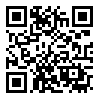BibTeX | RIS | EndNote | Medlars | ProCite | Reference Manager | RefWorks
Send citation to:
URL: http://caspianjp.ir/article-1-269-en.html
Background and Objective: The aim of this study was to explore the mediating role of emotion regulation difficulties in determining how personality organization and childhood trauma contribute to self-injurious behavior in adolescents. Specifically, we aimed to determine whether deficits in emotion regulation explain the association between these factors, providing insights for interventions such as dialectical behavior therapy and trauma-focused cognitive behavioral therapy to enhance emotion regulation and reduce self-injury risk.
Methods: This descriptive correlational study examined the relationships among key variables within a cohort of adolescents. Using multistage cluster random sampling, 356 adolescents aged 13–18 years residing in Tehran were recruited in 2024. Participants provided data through self-report questionnaires, measuring self-injury tendencies, personality organization, experiences of childhood trauma, and emotion regulation difficulties. To analyze the complex interplay of these variables, Structural Equation Modeling (SEM) was conducted using SPSS software.
Findings: The findings revealed significant positive relationships between personality organization (β=0.25, P<0.001) and childhood trauma (β=0.22, P<0.001) with the tendency for self-injurious behaviors. Additionally, a strong positive association was found between emotion regulation difficulties and self-injurious behaviors (β=0.42, P<0.001). Importantly, difficulties in emotion regulation significantly mediated the associations between both personality organization and childhood trauma and the propensity for self-injurious behaviors (P<0.001).
Conclusion: This study demonstrates that difficulties in emotion regulation significantly mediate the relationship between compromised personality organization, childhood trauma, and self-injurious behavior in adolescents. Therefore, interventions targeting emotion regulation skills are crucial for mitigating self-injury risk in this population.
| Rights and Permissions | |
 |
This work is licensed under a Creative Commons Attribution-NonCommercial 4.0 International License. |



